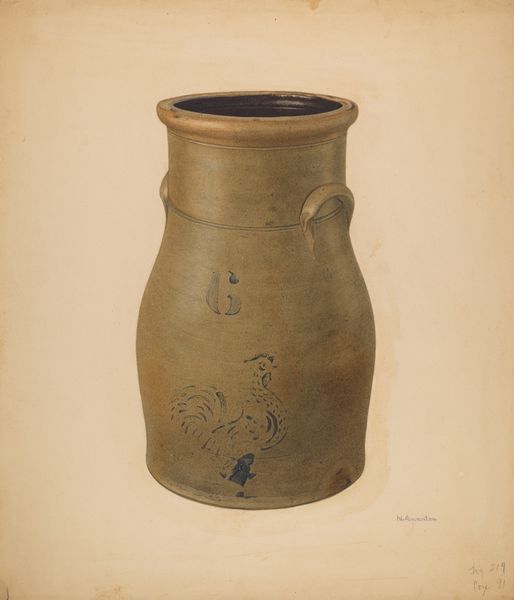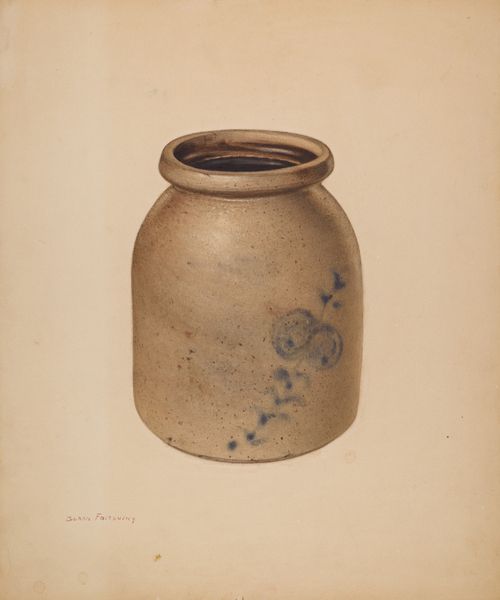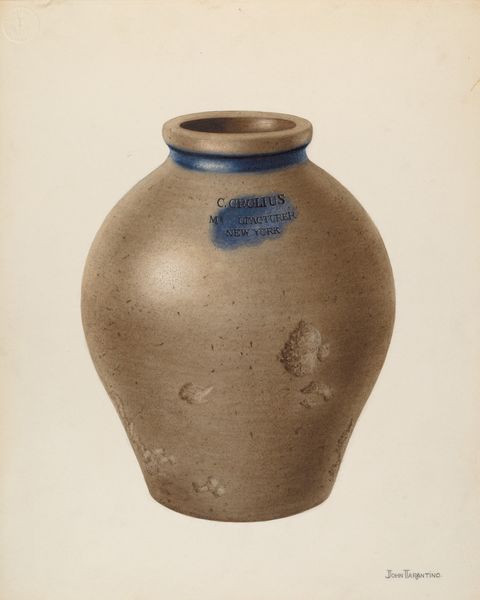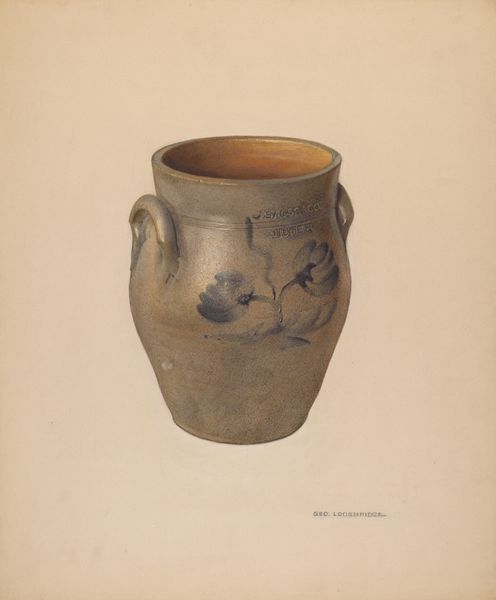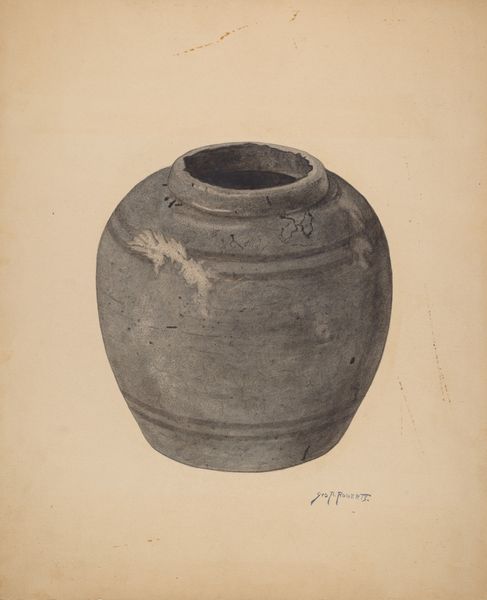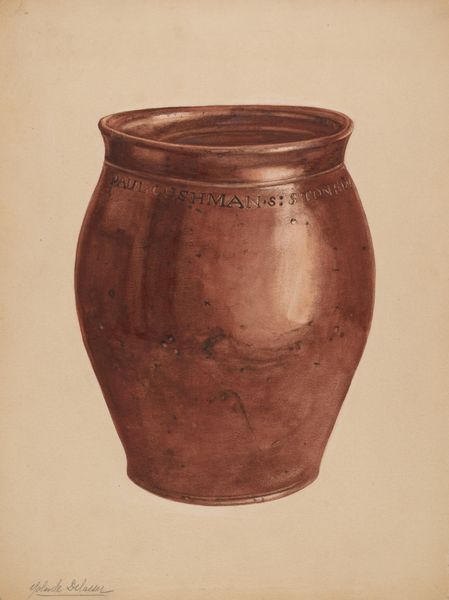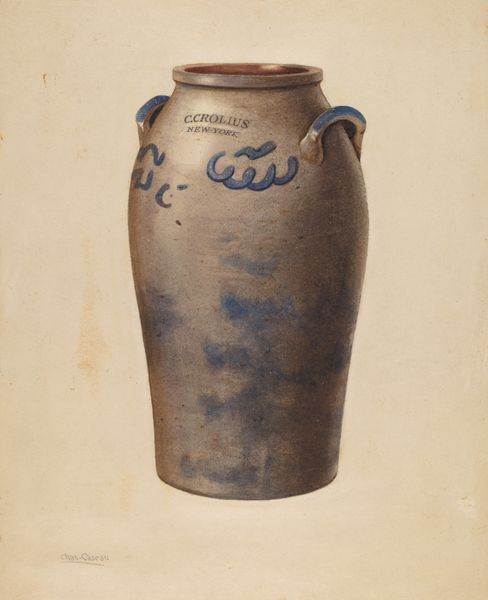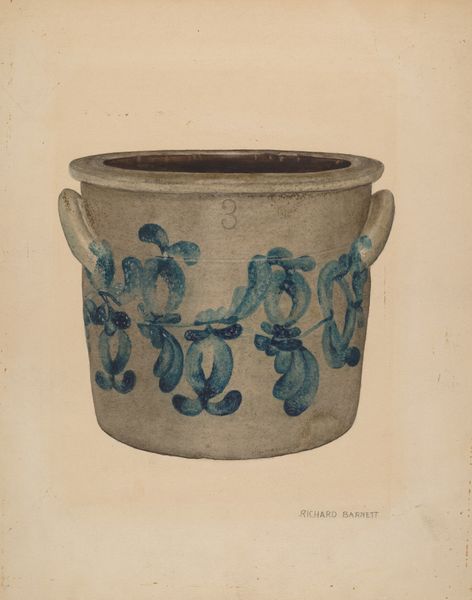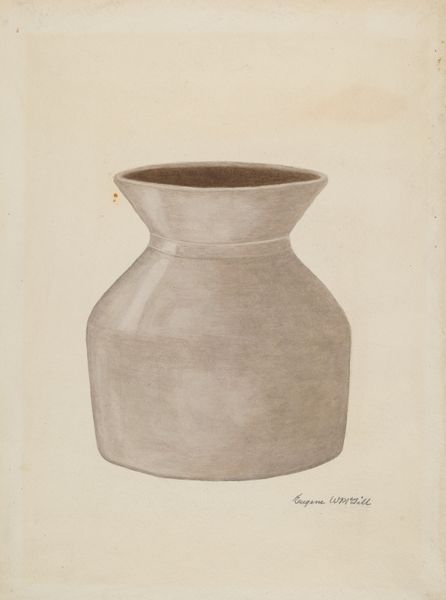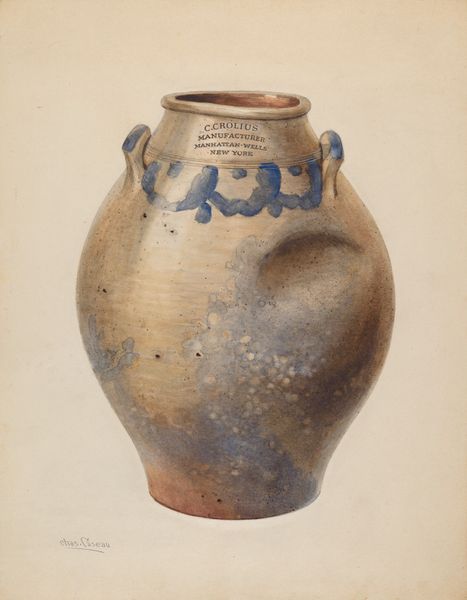
drawing, watercolor
#
drawing
#
watercolor
#
watercolour illustration
#
watercolor
#
realism
Dimensions: overall: 36 x 28.1 cm (14 3/16 x 11 1/16 in.) Original IAD Object: 12" x 11 3/4 (no further information given)
Copyright: National Gallery of Art: CC0 1.0
Curator: Looking at John Tarantino's "Crock," dating from around 1938, the first thing that strikes me is its gentle simplicity. It's just a watercolor and drawing of a stoneware crock, rendered in muted earth tones. Editor: Yes, it's incredibly subtle. Almost unremarkable at first glance. But there’s a quiet dignity to it. The materiality comes through so clearly. You can almost feel the weight and the coolness of the ceramic. I'm curious, what kind of process was used to make these utilitarian objects, and what kind of labor did it involve? Curator: Well, utilitarian indeed. These crocks were central to food preservation. Consider how vital they were in homes and farms, well before widespread refrigeration, for storing everything from salted meats to pickled vegetables. We can analyze these art objects in terms of use value. And its depiction gives us a small window into daily life. Editor: And not just daily life but potentially local economics as well. I can clearly read “S. AMBOY N. JERSY,” incised on the pot. South Amboy. That indicates the provenance. Knowing this adds context. How do images of ordinary items elevate them, or perhaps transform their meaning? Curator: Absolutely. Presenting the image is also contextual, since crocks like these are vessels tied to community histories. It suggests an object-based cultural heritage. Moreover, watercolor allowed a delicate study of its shape and form. You see those variations in tone – almost an X-ray vision that renders the pot in its total form? Editor: The inscription makes me consider notions of value and historical preservation, actually. Is this particular crock significant due to what it contained, its craftsmanship, or its origins? Curator: And its status as representation rather than mere useful product. The image reminds viewers how ordinary artifacts shape our understanding of daily life and larger narratives around, say, food culture, industry, or community identity. The artwork, as you've put it, invites the viewer to reflect. Editor: Definitely food for thought, a taste of history if you will. Curator: Precisely. So humble and full of history.
Comments
No comments
Be the first to comment and join the conversation on the ultimate creative platform.
